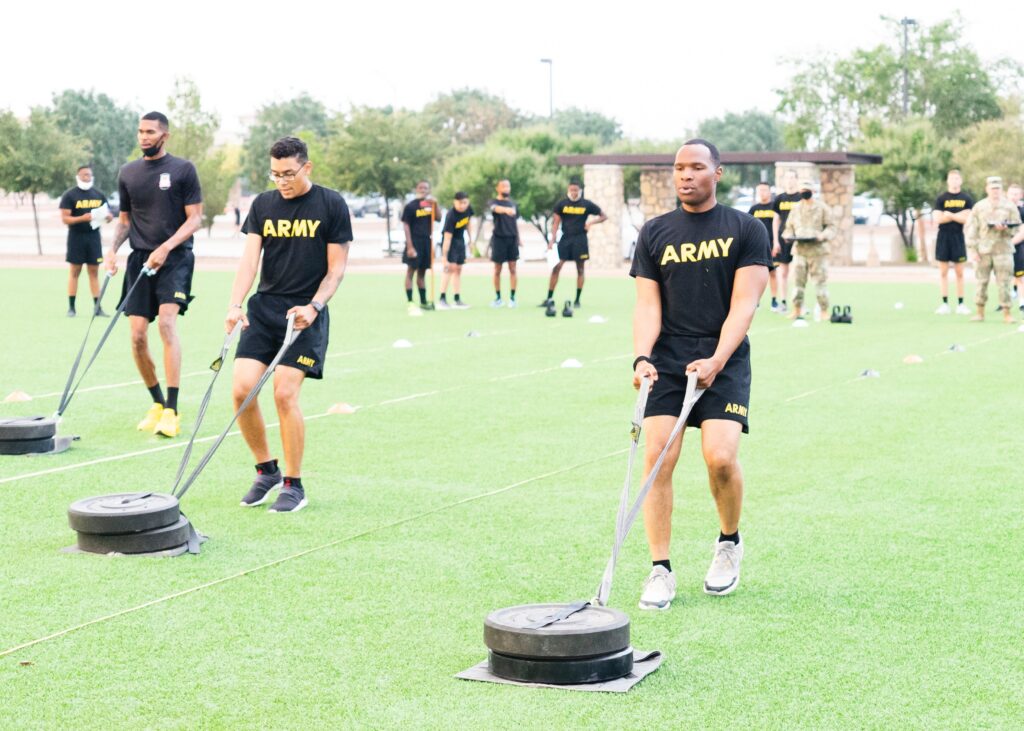Spring 2023
When to incorporate interval & HIIT workouts

How many times do we begin our day thinking that we have our daily workouts all planned out and our intended plan goes awry minutes prior to beginning our exercise? Or worse yet, as we are actually commencing our routine. When duty calls upon first responders — and it does always call — we will always sacrifice ourselves for our fellow brothers and sisters, even when it comes to our workouts. So now, whether we are called to work unexpected overtime, handle an issue before a shift, or are told to report for an unexpected mission at the last moment, we need to rapidly decide when in a time crunch what is better to do in a short amount of time.
Is Interval or High-Intensity Interval Training better? Let’s look at both to determine from an educational standpoint, which is better.
Interval Training
This is a type of exercise that is associated with maximal uptake of oxygen and an increase in cardiac output. When we train harder and more intensely, we consume oxygen at maximal levels. Therefore, interval training increases our VO2 Max, lactate threshold, and overall anaerobic and aerobic metabolism. Interval training is associated with training at 70%-80% of your maximal heart rate or Zone 3. Intervals typically occur between three (3) to five (5) minutes. If an individual does work for this timeframe then their rest period will be the same time for a 1:1 work-to-rest ratio. An example of this would be three minutes of work/exercise would yield three minutes of rest. Those that are better trained can rest for shorter periods. This ratio is prescribed in order to have your glycolytic energy system well-rested in order for your subsequent set to be performed at the same intensity as the first. In order to perform interval training, a firm base of aerobic capacity must be established by the individual initially in their exercise regimen.

High-Intensity Interval Training
This, more commonly referred to as HIIT, is a form of interval training that is associated with short and timed periods of very high intensity. HIIT is associated with training at 80%-90% and higher of your maximal heart rate or Zone 4. The benefits of HIIT equal that of interval training with the added benefit of increased running speed and running economy. HIIT Training can be higher/greater than VO2 max. This intensity will result in the ability to push harder at your race’s duration, or end, because of the increased lactate threshold. HIIT training can be for as little as 30 seconds or anywhere between two to three minutes, at or exceeding the same previous percentage with a rest period of 2-3 minutes or up to a 1:5 work-to-rest ratio.
Rest times are critical, especially with HIIT, because the intensities are prescribed at higher percentages. During HIIT, our glycolytic energy system increases our blood lactate levels which in turn increases our anaerobic capacity and our metabolism. An added benefit of HIIT is the increased caloric burn post-workout which is called the Excess Post Oxygen Consumption effect or the “EPOC/After-Burn Effect.” It is said that the EPOC Effect can elevate caloric burn up to 24-48 hours post-exercise.
What are examples of Interval Training and HIIT in a time crunch?
Starting out with a dynamic stretching routine prior to your training is essential. It is encouraged to do this routine for at least ten (10) minutes but if it is less, then make sure you conduct the dynamic stretches that will replicate the movement patterns you will conduct in your workout.
If conducting an endurance-based workout, running, the rowing ergometer or bike ergometer can be conducted for the prescribed times previously mentioned above for perhaps four-to-six rounds depending on your time crunch. If conducting a resistance-based workout with weights, it is better to utilize compound movements that incorporate multiple bones, joints, ligaments, and tendons along with multiple muscle groups. This training can be conducted for the prescribed times previously mentioned above for perhaps six-to-eight rounds depending on your time crunch. Examples of this would be the bench press, deadlift, squat, lunge, push-up (weighted if possible), and the IYT Raise with TRX bands. These movements can be conducted as a superset, one immediately after another, or you can combine two exercises into one such as squats with an overhead press, or bench press immediately to remaining on the bench in the sitting position to jump upwards from the bench to explosively work your legs in a plyometric exercise.
» ALSO SEE: 5 Facts about ATCs in Special Warfare Training Wing
Or perhaps a bench press followed by jumping rope for 30 seconds/running in place or a dumbbell press with a sandbag hold in the front rack position to work the anterior chain for 30 seconds. The possibilities are endless, simply think outside the box.
An added benefit of HIIT with weights is that it will really accelerate fat burning as it helps you develop lean muscle. Lastly, because of the high intensities, intervals, and HIIT training for those starting out, should not be conducted more than one to two times per week to avoid, overtraining your body and central nervous system fatigue. Remember to implement proper form and technique in your exercise regimens for career longevity.
Daniel J. Borowick, of DOMEX Strength and Fitness, LLC can be contacted at DOMEXstrengthandfitness@gmail.com, concerning any questions about this article or for all of your fitness-related questions in order to reach optimal human performance. Borowick, MS, CSCS, is a former DEA Special Agent. Currently, Borowick is a strength and conditioning specialist for GAP Solutions Inc., as a private contractor serving the US Army’s 1st Armored Division SUST BDE/22nd Chemical BDN in their Holistic, Health, and Fitness (H2F) Program.



